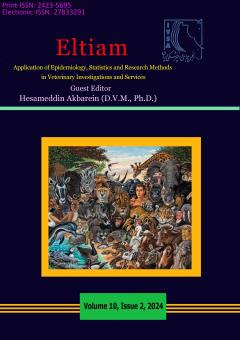Septic arthritis is an important cause of lameness in cattle and calves and delay in treatment, can lead to early culling, a decrease in production, and economic losses in herd. Although responsible for septic arthritis but can also be caused by other microorganisms. Th
More
Septic arthritis is an important cause of lameness in cattle and calves and delay in treatment, can lead to early culling, a decrease in production, and economic losses in herd. Although responsible for septic arthritis but can also be caused by other microorganisms. This condition occurs when joint space affects by invasion of various microorganisms. Failure of transfer of passive immunity, penetrating wounds, septicemia, and therapeutic or diagnostic interventions are the causes of septic arthritis. Lameness, joint effusion, pain, and fever are the most important of clinical signs of septic arthritis. One or more joints may be affected. Complete physical examination, synovial fluid and blood analysis, and imaging studies techniques are used as diagnostic tools for septic arthritis. Early diagnosis and appropriate treatment of septic arthritis are necessary to improve prognosis. Treatment strategy of septic arthritis includes antimicrobial therapy, anti-inflammatories, and joint lavage. Pathophysiology, diagnosis and treatment of septic arthritis are described in this article.
Manuscript profile


